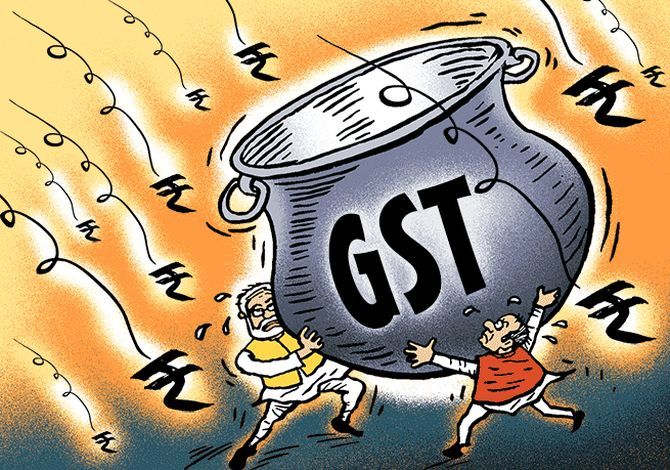 | « Back to article | Print this article |
One of the grey areas is whether the anti-profiteering provisions can provide for a comparison of tax rates between the pre-GST and post-GST eras, says Niraj Bagri.
Ilustration: Dominic Xavier/Rediff.com

The concept of Goods and Services Tax (GST) has been modelled along the lines of the value added tax (VAT) system adopted globally.
Taking a cue from what other countries did on the introduction of VAT laws, the government incorporated provisions relating to anti-profiteering, to ensure that any benefit arising to any supplier due to the introduction of GST should reach the buyer.
The anti-profiteering provisions provide for the following:
If there is a reduction in the rate of tax; or
If there is any benefit arising out of the input tax credit, then the same should be passed on to the recipient by a commensurate reduction in prices.
Several questions arise for considerations which are discussed in this article.
The first and foremost is the validity of this section, i.e. whether GST law can compel any supplier to reduce the price of its supplies.
GST law has been enacted pursuant to Article 246A of the Constitution of India which empowers to levy and collect GST on supplies.
On a plain reading of Article 246A, it does not appear that provisions relating to anti-profiteering could be enacted under it.
Whilst the intention behind the provision is to make it customer-friendly, it needs to be backed up with an enabling provision.
One may need to consider whether the enabling power could flow from the residuary entry or any other entries listed in the seventh schedule.
A question would also arise as to whether the said enabling power could be made applicable to the state GST laws.
Another grey area is whether the anti-profiteering provisions can provide for a comparison of tax rates between the pre-GST and post-GST eras.
There is a definition of central tax, state tax, etc. being levied under the respective enactments.
As an example, section 9 of central GST law, provides that a tax called the central GST will be levied. Similar provisions are under the integrated GST and state GST.
The anti-profiteering provisions do not specifically provide that one needs to compare GST rates with pre-GST rates to ascertain whether there is any reduction of tax rates.
Given this, one can infer that the reference to the reduction in the rate of tax is only the tax specified under the GST laws.
The same doubt also extends in the context of input tax credit.
The definition of input tax credit specifies that it means tax charged under central GST, state GST, or integrated GST.
The transitional credits, that is excise duty, service tax, state VAT, do not fall within the meaning of input tax credit.
The GST law itself makes a distinction between cenvat credit, VAT credit which have been transitioned to GST law and the taxes which have been charged under the GST law.
Therefore, one can argue that the benefit, if any, arising due to an additional credit of taxes of excise duty, service tax, etc. taken as a part of transitional credit provision, should not be considered to evaluate whether there has been any additional benefit of input tax credit to the supplier.
The anti-profiteering provisions would get attracted only if there are any changes in the input tax credit scheme under GST.
Certain legislative changes have been proposed recently, though they are yet to be enacted.
The GST laws also impose an onerous obligation on the supplier to fulfil the requirement of anti-profiteering without giving an appropriate guideline for computing the same.
The recent rulings which have been issued by the national anti-profiteering authority require suppliers to not only refund the additional benefit but also pay interest on the same.
The absence of appropriate guidelines/mechanism to compute the benefit has also left the door open to challenge the provisions itself.
The provision is intended to cease in operation two years from the date of enactment.
There are questions around how one computes additional benefits accruing to the supplier over this length of time when the pricing of any supply is the factor of various elements, tax rate or input tax credit being only one of them.
There being no limitation period being prescribed, one cannot help but think that the impact of these provisions may stretch well beyond two years!
Niraj Bagri is partner, Dhruva Advisors. The views expressed are personal